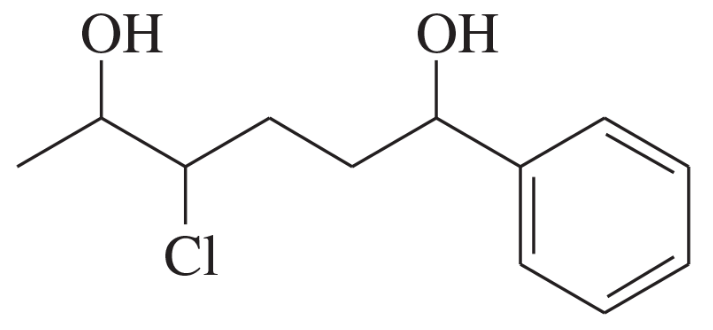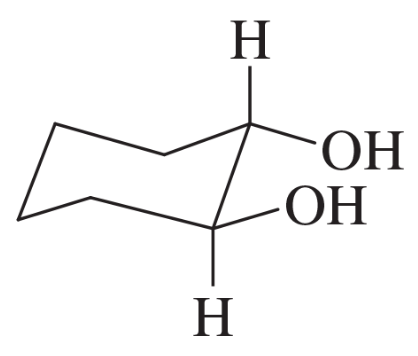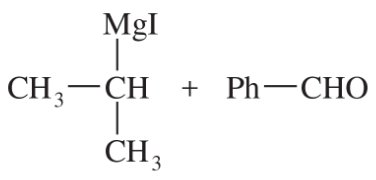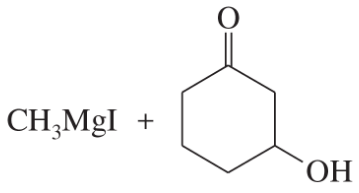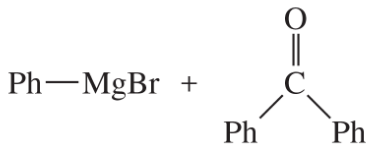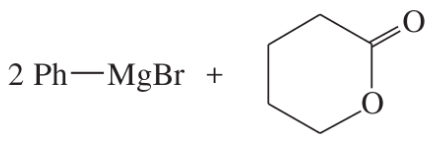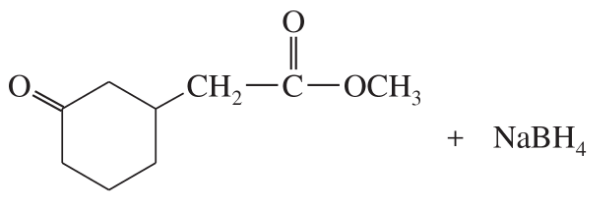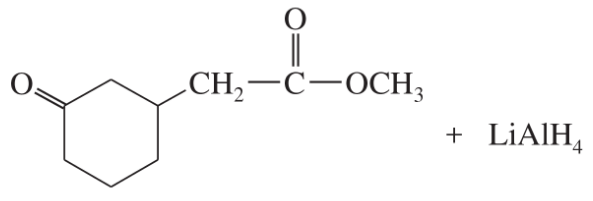 Back
BackProblem 26c
Show how you would synthesize the following alcohol by reducing appropriate carbonyl compound.
c. 2-methylhexan-3-ol
Problem 26d
Show how you would synthesize the following alcohol by reducing appropriate carbonyl compound.
(d)
Problem 27
Arrange the following compounds in order of decreasing acidity.
CH3COOH, CH3OH, CH3CH3, CH3SO3H, CH3NH2, CH3SH, CH3C≡CH
Problem 28
Give IUPAC names for the following compounds.
Problem 29
Authentic skunk spray has become valuable for use in scent-masking products. Show how you would synthesize the major component of skunk spray (3-methylbutane-1-thiol and but-2-ene-1-thiol) from any of the readily available butene or from buta-1,3-diene.
Problem 30f,g
Give a systematic (IUPAC) name for each alcohol. Classify each as primary, secondary, or tertiary.
(f)
(g)
Problem 31a,b
Give systematic (IUPAC) names for the following diols and phenols.
(a)
(b)
Problem 32a,b,c
Draw the structures of the following compounds. (Includes both new and old names.)
(a) triphenylmethanol
(b) 4-(chloromethyl)heptan-3-ol
(c) 2-cyclohexen-1-ol
Problem 32d,e
Draw the structures of the following compounds. (Includes both new and old names.)
(d) 3-cyclopentylhexan-3-ol
(e) meso-2,4-pentanediol
Problem 32i,j
Draw the structures of the following compounds. (Includes both new and old names.)
i. cyclopent-3-ene-1-thiol
j. dimethyl disulfide
Problem 32k
Draw the structures of the following compounds. (Includes both new and old names.)
(k) 3-methylhex-4-yn-2-ol
Problem 33a,b
Predict which member of each pair has the higher boiling point, and explain the reasons for your predictions.
a. hexan-1-ol or 3,3-dimethylbutan-1-ol
b. hexan-2-one or hexan-2-ol
Problem 34a
Predict which member of each pair is more acidic, and explain the reasons for your predictions.
a. cyclopentanol or 3-chlorophenol
Problem 34b
Predict which member of each pair is more acidic, and explain the reasons for your predictions.
b. cyclohexanol or cyclohexanethiol
Problem 35a
Predict which member of each group is most soluble in water, and explain the reasons for your predictions.
a. butan-1-ol, pentan-1-ol, or propan-2-ol
Problem 35b
Predict which member of each group is most soluble in water, and explain the reasons for your predictions.
b. chlorocyclohexane, cyclohexanol, or cyclohexane-1,2-diol
Problem 36a,b
Draw the organic products you would expect to isolate from the following reactions (after hydrolysis).
(a)
(b)
Problem 36c,d
Draw the organic products you would expect to isolate from the following reactions (after hydrolysis).
(c)
(d)
Problem 36f,g
Draw the organic products you would expect to isolate from the following reactions (after hydrolysis).
(f)
(g)
Problem 36j
Draw the organic products you would expect to isolate from the following reactions (after hydrolysis).
(j)
Problem 36k,l
Draw the organic products you would expect to isolate from the following reactions (after hydrolysis).
(k)
(l)
Problem 36m
Draw the organic products you would expect to isolate from the following reactions (after hydrolysis).
(m)
Problem 36n
Draw the organic products you would expect to isolate from the following reactions (after hydrolysis).
(n)
Problem 36p
Draw the organic products you would expect to isolate from the following reactions (after hydrolysis).
(p)
Problem 37a
Starting from bromobenzene and any other reagents and solvents you need, show how you would synthesize the following compounds. Any of these products may be used as starting materials in subsequent parts of this problem.
a. 1-phenylpropan-1-ol
Problem 37b
Starting from bromobenzene and any other reagents and solvents you need, show how you would synthesize the following compounds. Any of these products may be used as starting materials in subsequent parts of this problem.
b. 1-phenylpropene
Problem 37c
Starting from bromobenzene and any other reagents and solvents you need, show how you would synthesize the following compounds. Any of these products may be used as starting materials in subsequent parts of this problem.
c. 1-phenylpropan-2-ol
Problem 37d
Starting from bromobenzene and any other reagents and solvents you need, show how you would synthesize the following compounds. Any of these products may be used as starting materials in subsequent parts of this problem.
d. 3-phenylprop-2-en-1-ol
Problem 38
Write structures for a homologous series of alcohols (R―OH) having from one to six carbons.
Problem 38a
Show how you would synthesize the following alcohol from appropriate alkene.
(a)





